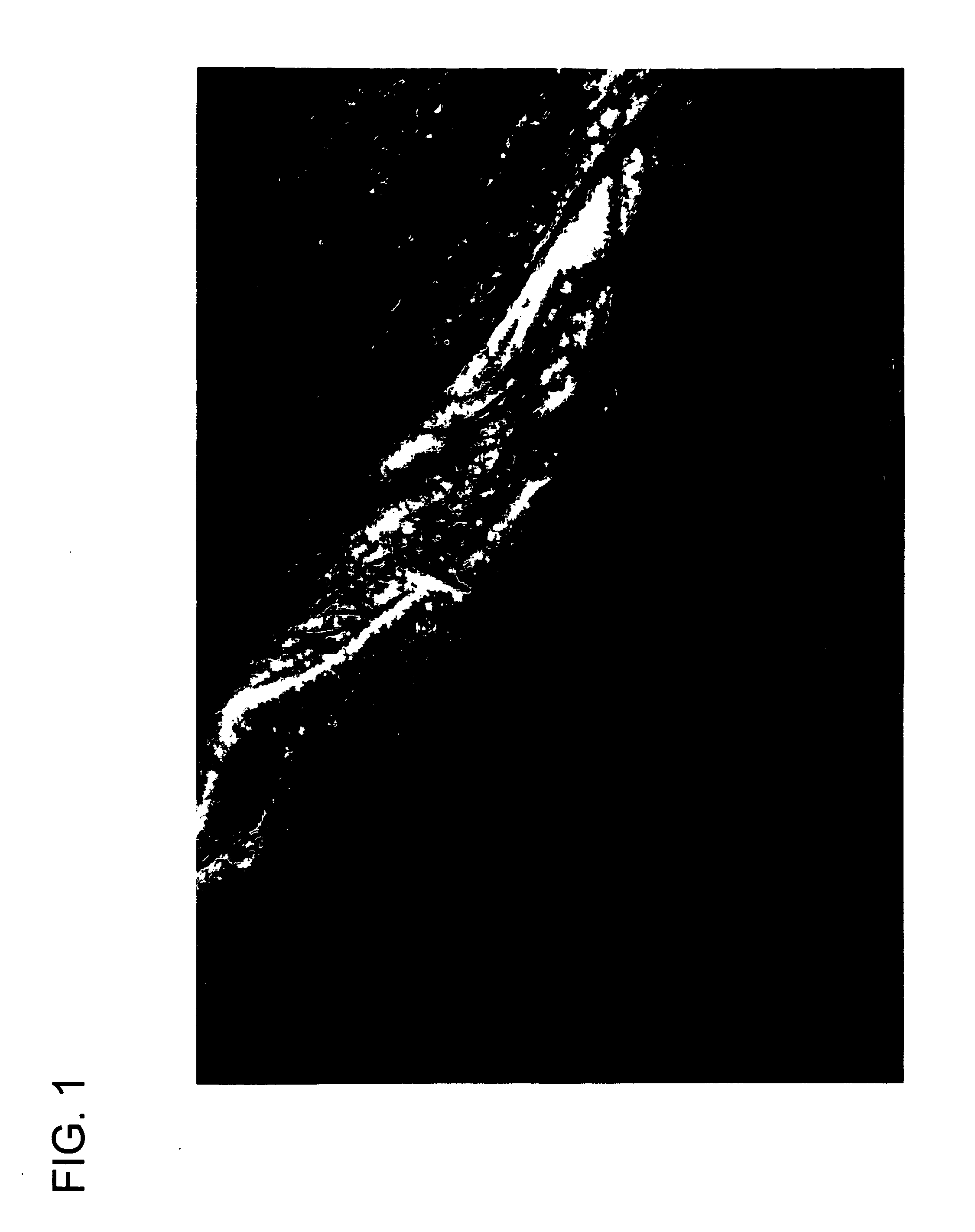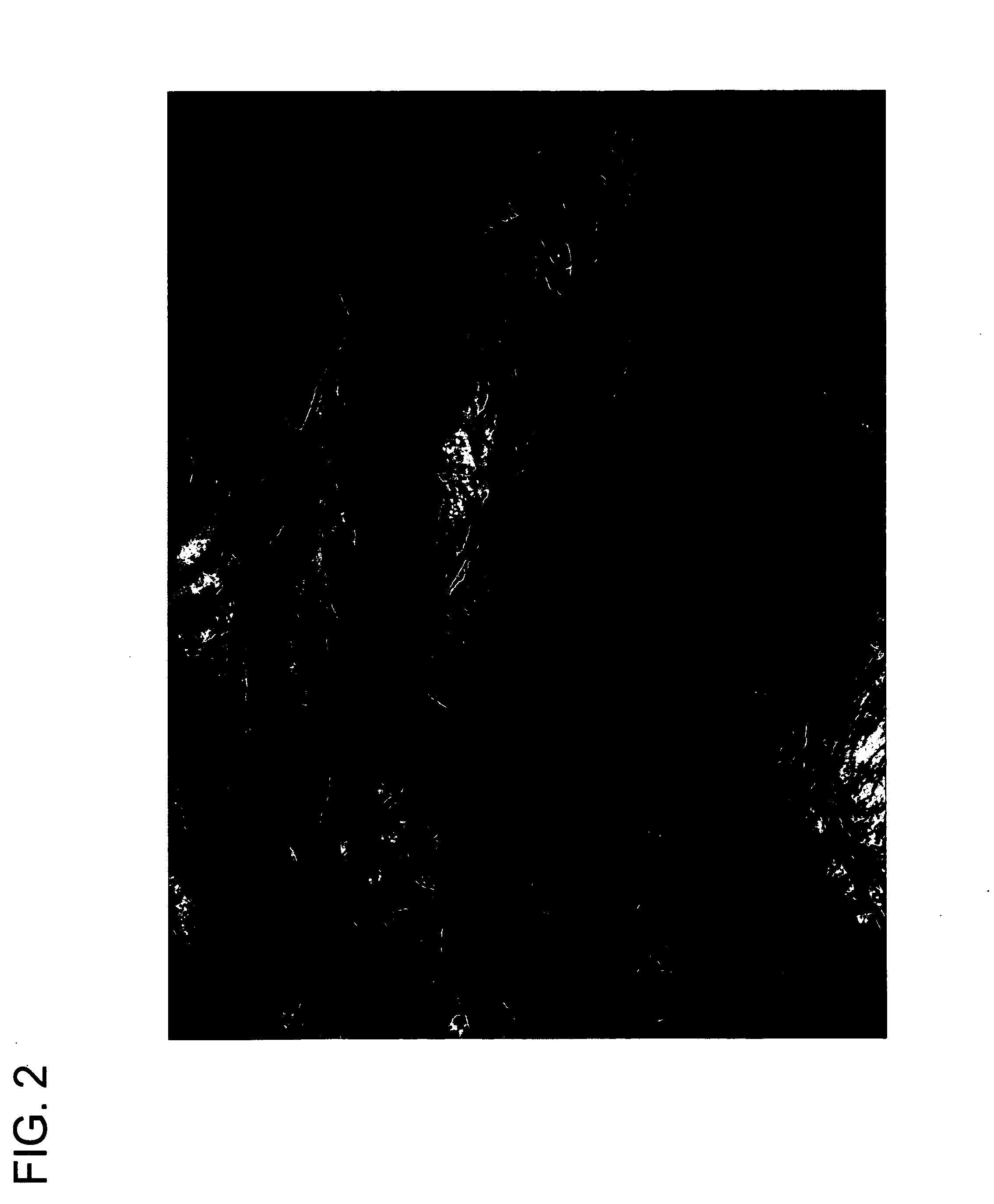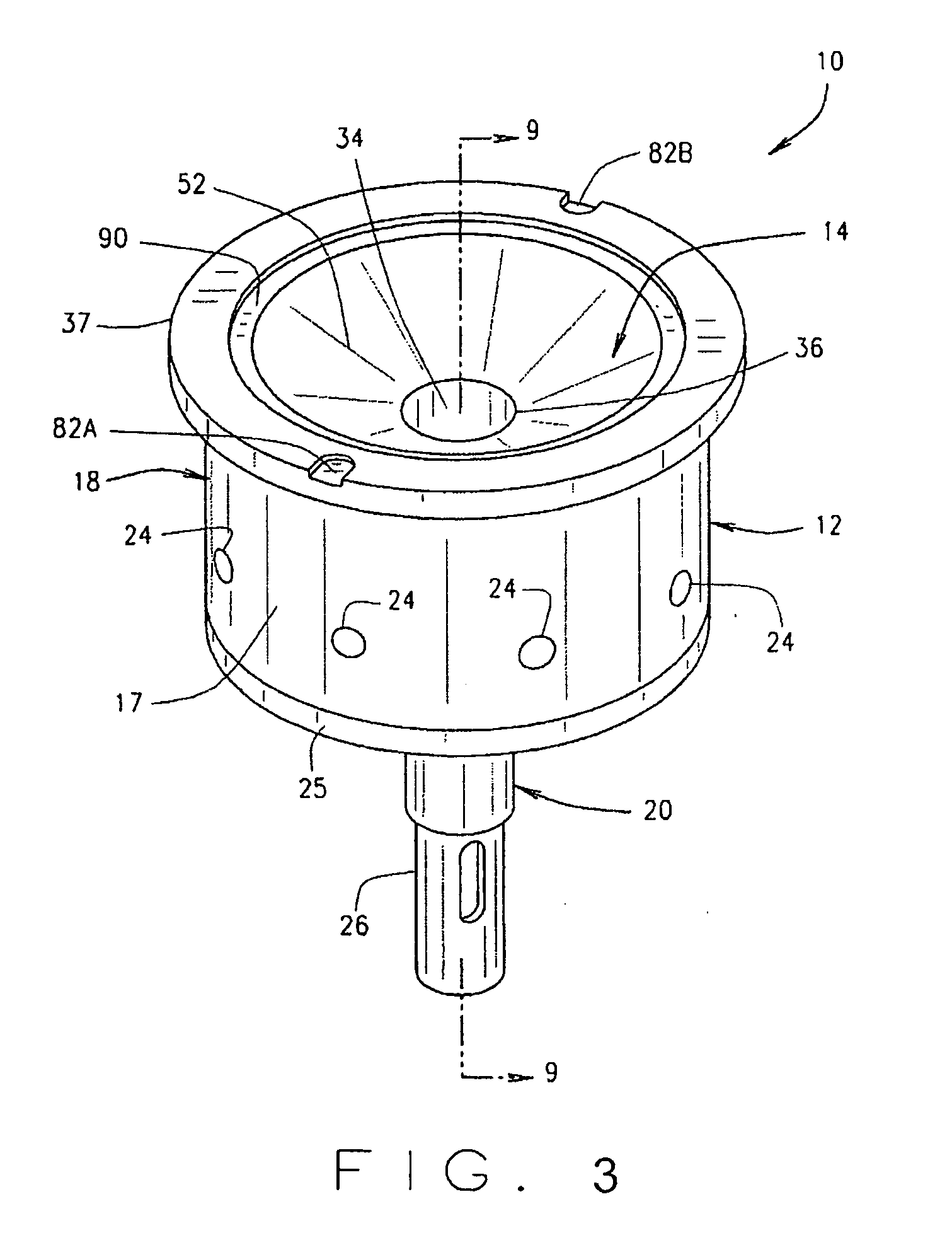Dried Food Compositions
a technology of food compositions and dried fruits, which is applied in the field of dried food compositions, can solve the problems of inability to efficiently contact or react with food, prohibitive difficulty in mimicking the flavor and texture of meat, and failure to meet the needs of making a vegetable-based or vegetable-containing jerky-style meat snack
- Summary
- Abstract
- Description
- Claims
- Application Information
AI Technical Summary
Benefits of technology
Problems solved by technology
Method used
Image
Examples
example 1
Determination of Shear Strength of the Structured Protein Product
[0177]Shear strength of a sample is measured in grams and may be determined by the following procedure. Weigh a sample of the structured protein product and place it in a heat sealable pouch and hydrate the sample with approximately three times the sample weight of room temperature tap water. Evacuate the pouch to a pressure of about 0.01 Bar and seal the pouch. Permit the sample to hydrate for about 12 to about 24 hours. Remove the hydrated sample and place it on the texture analyzer base plate oriented so that a knife from the texture analyzer will cut through the diameter of the sample. Further, the sample should be oriented under the texture analyzer knife such that the knife cuts perpendicular to the long axis of the textured piece. A suitable knife used to cut the extrudate is a model TA-45, incisor blade manufactured by Texture Technologies (USA). A suitable texture analyzer to perform this test is a model TA, T...
example 2
Determination of Shred Characterization
[0178]A procedure for determining shred characterization may be performed as follows. Weigh about 150 grams of a structured protein product using whole pieces only. Place the sample into a heat-sealable plastic bag and add about 450 grams of water at 25° C. Vacuum seal the bag at about 150 mm Hg and allow the contents to hydrate for about 60 minutes. Place the hydrated sample in the bowl of a Kitchen Aid mixer model KM14G0 equipped with a single blade paddle and mix the contents at 130 rpm for two minutes. Scrape the paddle and the sides of the bowl, returning the scrapings to the bottom of the bowl. Repeat the mixing and scraping two times. Remove ˜200 g of the mixture from the bowl. Separate the ˜200 g of mixture into three groups. Group 1 is the portion of the sample having fibers at least 4 centimeters in length and at least 0.2 centimeters wide. Group 2 is the portion of the sample having strands between 2.5 cm and 4.0 cm long, and which a...
example 3
Production of Structured Protein Products
[0179]The following extrusion process may be used to prepare the structured protein products of the invention. Added to a paddle blender are the following: 1000 kilograms (kg) Supro® 620 (soy isolate), 440 kg wheat gluten, 171 kg wheat starch, 34 kg soy cotyledon fiber, 10 kg of xylose, 9 kg dicalcium phosphate, and 1 kg L-cysteine. The contents are mixed to form a dry blended soy protein mixture. The dry blend is then transferred to a hopper from which the dry blend is introduced into a preconditioner along with water to form a conditioned soy protein pre-mixture. The conditioned soy protein pre-mixture is then fed to a twin-screw extrusion apparatus at a rate of not more than 75 kg / minute. The extrusion apparatus comprises five temperature control zones, with the protein mixture being controlled to a temperature of from about 25° C. in the first zone, about 50° C. in the second zone, about 95° C. in the third zone, about 130° C. in the four...
PUM
| Property | Measurement | Unit |
|---|---|---|
| temperature | aaaaa | aaaaa |
| temperature | aaaaa | aaaaa |
| temperature | aaaaa | aaaaa |
Abstract
Description
Claims
Application Information
 Login to View More
Login to View More - R&D
- Intellectual Property
- Life Sciences
- Materials
- Tech Scout
- Unparalleled Data Quality
- Higher Quality Content
- 60% Fewer Hallucinations
Browse by: Latest US Patents, China's latest patents, Technical Efficacy Thesaurus, Application Domain, Technology Topic, Popular Technical Reports.
© 2025 PatSnap. All rights reserved.Legal|Privacy policy|Modern Slavery Act Transparency Statement|Sitemap|About US| Contact US: help@patsnap.com



